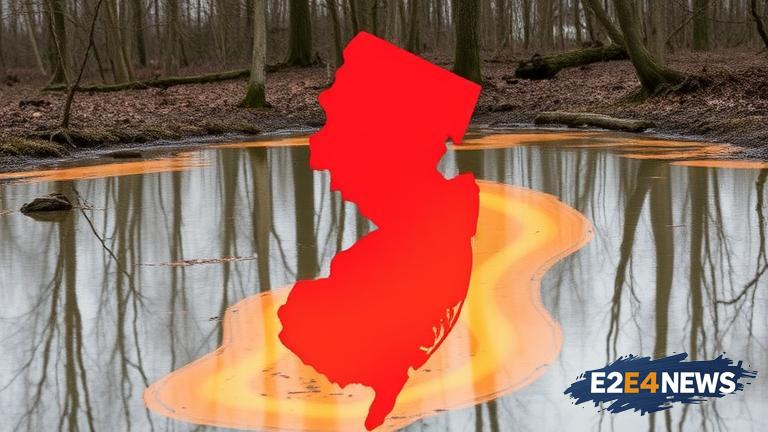In a landmark decision, the state of New Jersey has reached a $2 billion settlement with companies responsible for contaminating the state’s water supply with per- and polyfluoroalkyl substances (PFAS). The settlement, announced on August 4, 2025, is one of the largest of its kind and marks a significant victory for the state’s efforts to hold polluters accountable. PFAS, also known as ‘forever chemicals,’ have been linked to various health problems, including cancer, reproductive issues, and thyroid disease. The contamination has affected numerous water sources across the state, including drinking water, groundwater, and surface water. The lawsuit, filed by the New Jersey Department of Environmental Protection, targeted several companies, including 3M, DuPont, and Chemours, which have been accused of knowingly releasing PFAS into the environment. The settlement will be used to fund cleanup efforts, provide compensation to affected communities, and support research into the health effects of PFAS exposure. New Jersey Governor, Phil Murphy, hailed the settlement as a ‘major milestone’ in the state’s fight against PFAS contamination. The governor emphasized the importance of protecting the state’s natural resources and ensuring that those responsible for the contamination are held accountable. The settlement is also expected to have a significant impact on the national conversation around PFAS contamination, with other states and communities likely to follow New Jersey’s lead. The Environmental Protection Agency (EPA) has also taken steps to address PFAS contamination, including setting limits on the amount of PFAS allowed in drinking water. However, many advocates argue that more needs to be done to address the scale and scope of the problem. The $2 billion settlement is a significant step forward, but it is only the beginning of a long and complex process to restore the state’s water supply and protect public health. The settlement will be distributed among various stakeholders, including municipalities, water utilities, and individual residents who have been affected by the contamination. The funds will be used to support a range of activities, including water treatment, infrastructure upgrades, and health studies. In addition to the financial settlement, the companies involved have also agreed to take steps to prevent future PFAS contamination. This includes implementing new manufacturing processes and waste disposal practices that minimize the release of PFAS into the environment. The settlement has been welcomed by environmental groups and community advocates, who have been pushing for action on PFAS contamination for years. However, some critics argue that the settlement does not go far enough, and that more needs to be done to address the root causes of the problem. As the state moves forward with the settlement, there will be a focus on ensuring that the funds are used effectively and that the companies involved are held accountable for their actions. The settlement is a significant achievement, but it is only one part of a broader effort to protect public health and the environment. New Jersey’s experience will likely serve as a model for other states and communities grappling with PFAS contamination, and will help to inform the development of national policies and regulations to address this complex issue. The state’s leadership on this issue has been recognized nationally, and the settlement is expected to have a lasting impact on the way that companies approach environmental responsibility. In the coming months and years, the state will continue to work to implement the terms of the settlement and to ensure that the companies involved are meeting their obligations. This will involve ongoing monitoring and enforcement, as well as efforts to support affected communities and promote environmental sustainability. The $2 billion settlement is a major victory, but it is only the beginning of a long-term effort to protect the state’s natural resources and promote public health.





